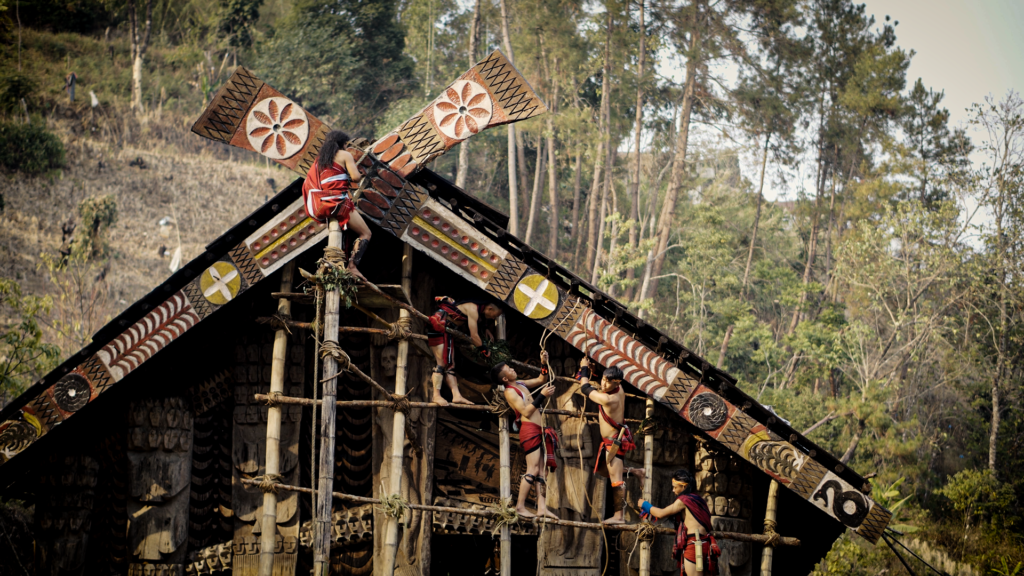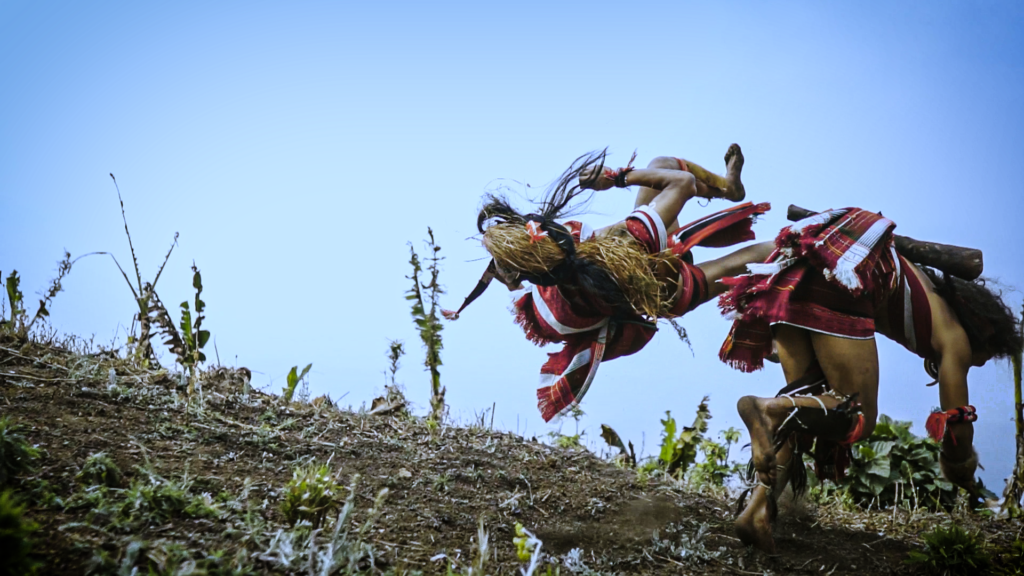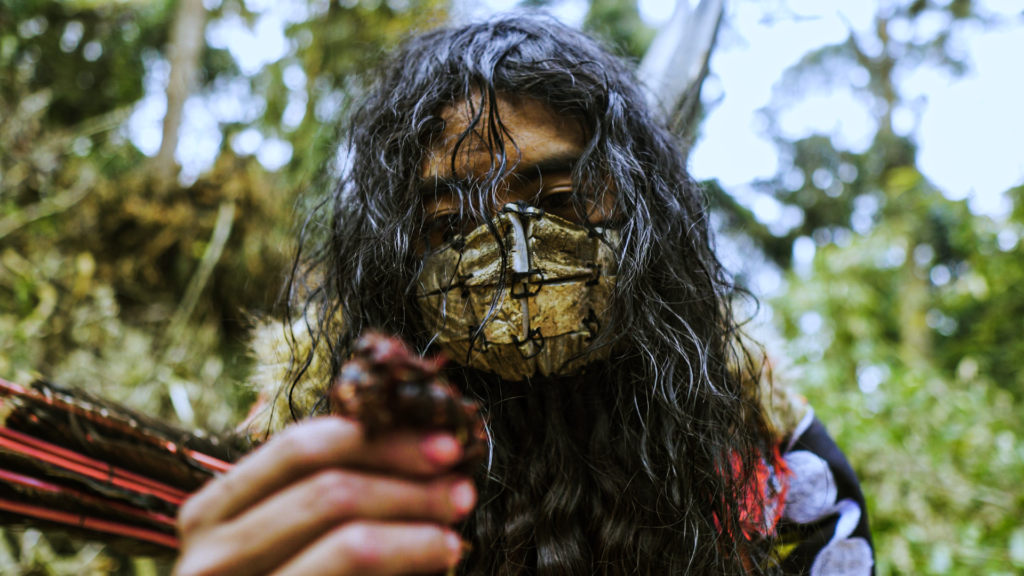EKHON | 12 September, 2023
Ukhrul: It would be preposterous for someone like me who scarcely watches Tangkhul films to write a review on one. But then Samkhok, (a community bed) isn’t like any other Tangkhul films. It has certainly set a new bar in the industry that has so far only seen stories of a boy and a girl in a relationship and family against it for XYZ reasons.
Directed by AC Rinshing and written by Kahorrei AC with Sorenzan Vashum as Cinematographer, Samkhok is inspired by true events and celebrates the richness of the culture and traditions of the Tangkhul Nagas before the onset of Christianity.

Set in the backdrop of Ringui Village, Samkhok is woven around the family of a clan Chief preparing the Feast of Merit (Maran kasa), and the quest of the Chief to avenge his son’s death. Through them, the movie intricately explores the bonding of a family, the complicacy of land ownership, the customs and rituals of the community and the distinct bond with nature.
Perspective
With Samkhok, I see hope in Tangkhul cinema, a future where we can watch films that don’t make you cringe or suffer from abject humiliation at the superficial acting and dialogue. Not that I’m demeaning the efforts of other filmmakers and actors.

Like Yungyung, a shy young boy who burst into the music scene with his compelling voice, vulnerable lyrics coupled with tunes of global appeal captured the imagination or rather aural-gination of everyone and became the figure every new singer looked up to and changed the facet of the Tangkhul music industry, Samkhok has likewise the itinerary of sort to making a revolution in the Tangkhul film industry.
While the film has every ingredient to succeed as a cult movie it does come with professional flaws. But not to critic too much because this is the first film for the director, writer and actors involved, except veteran actor Ameipam of “Khipawui Khayon Khala” fame, which he well did justice to his role as the clan Chief, Samkhok is a promising film with rooms for improvement in camera works, effects and editing.

I am compelled to mention one scene that I thought was quite impactful. The scene where the ‘medium’ is performing a ritual speaking a ‘local dialect’. That to me was a raw deal and if it were to continue with the same tune, it would have created the suspense it needed and added to the authenticity of the story. Subtitles would have easily done the job for everyone else.
Keeping aside the limitations in the technical aspect of filmmaking, the fact that the indigenous way of life of the Tangkhul community, Ringui in particular was captured is greatly commendable and will go down in history as a documentation worth archiving. The artefacts used in the film, tree cutting and carving of Samkhok in real-time and the actual building of the Lengcheng house are surreal and something of a legacy. (Though I felt a little uncomfortable at the cutting down of the giant old tree.)
The film boasts of the ambition and the long-term vision of the filmmaker who strives to make it global. Also, the involvement of 400 odd crews reportedly volunteered from Ringui is evidence of the villagers’ utter love for art and culture. It deserved a standing ovation.
It was no wonder then when ex-MLA Kangam Alfred who helped release the film considered Ringui as the “trendsetter in the Tangkhul film industry” saying, let it be the beginning of great things to come. The sentiment of which I endorsed.

There’s definitely a change in the direction of Tangkhul filmmaking post-Samkhok. I applauded the effort and enthusiasm of the entire crew but, most of all, the director who envisioned the indigenous way of life in such detail. Now we look forward with anticipation to the second part with hopefully a better script and even better cinematography.

Wish u very very best